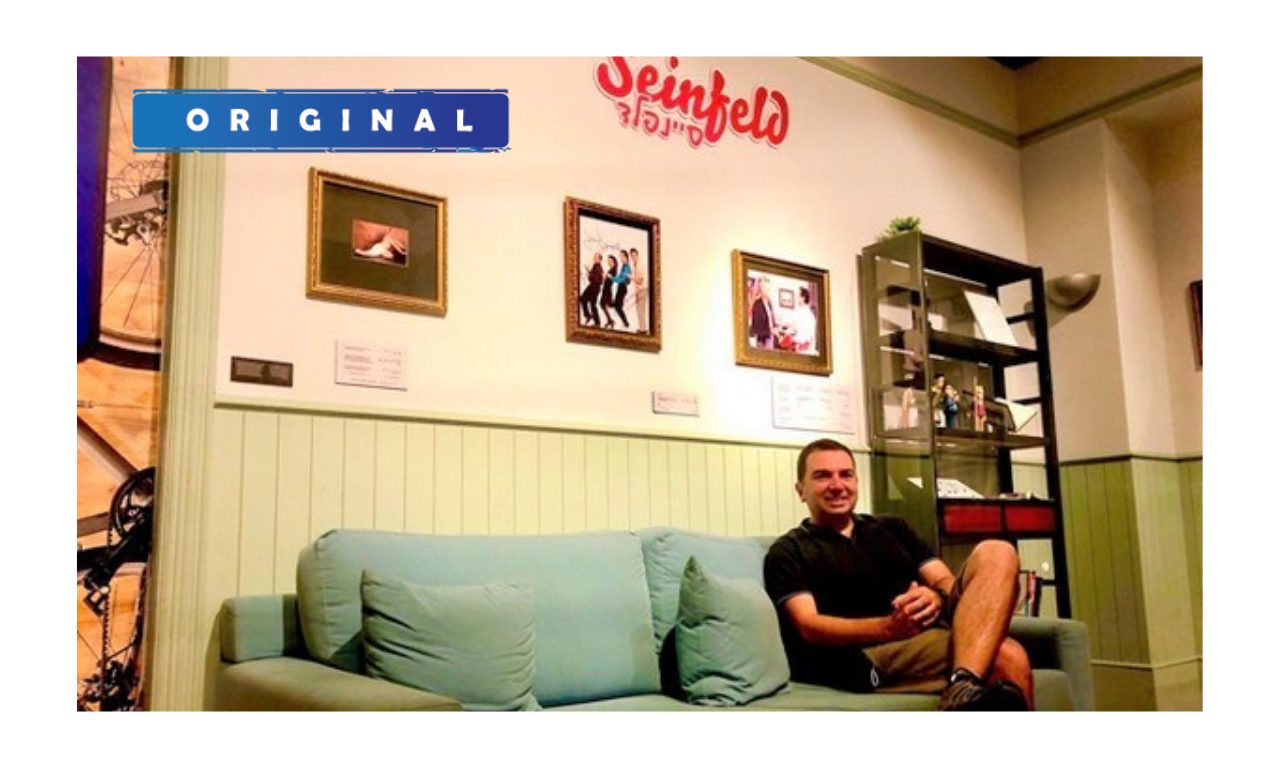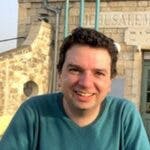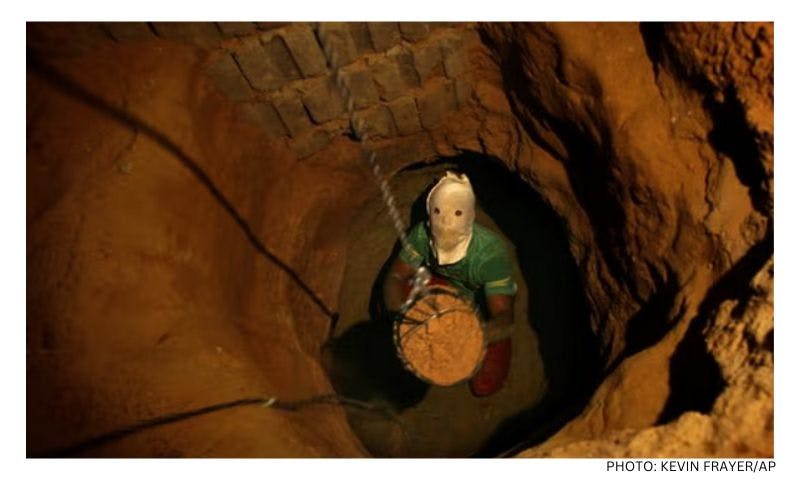Published: 6 July 2021
Last updated: 4 March 2024
ITTAY FLESCHER visits ANU - Museum of the Jewish People in Tel Aviv and comes away convinced it will become a must-see destination for Diaspora Jews
“This story begins with the present. The fascinating array comprising Jewish identity allows each one of us to recognize ourselves.... The Jewish present will lead to the past, to the historical story of the Jewish people. The display is arranged in themes as opposed to chronological order. It has no beginning or end - Choose your own path.”
THESE ARE THE words on the third floor of ANU - Museum of the Jewish People, that opened this year in March, almost entirely replacing or updating every exhibit from Beit Hatfutsot, the former Museum of the Diaspora that stood in its place on the Tel Aviv University Campus in Israel.
From when it opened in 1978, Beit Hatfusot has been visited by millions of Israelis and diaspora groups, to learn about the Jewish past, and how and where Jews lived and mostly suffered before the creation of Israel.
I had visited the original museum, both as a participant and an educator, on many gap year programs. My two strongest memories were the enlarged relief of the heartbreaking Arch of Titus from Rome, that marked the beginning of the diaspora, and a gallery filled with 18 miniature synagogues, each as intricate and tiny as a dollhouse.
In the new museum, visitors will spend much more time marvelling at the humour of Woody Allen and Israeli comedy show Eretz Nehederet or the guitars of Leonard Cohen and Gene Simmons, from KISS. The change is quite intentional.
Upon entry to the new museum, visitors are faced with realistic, life-size projections of actual Jews, mostly from Israel and the United States, explaining what Judaism means to them. The diversity in the many answers they give to the question of “why be Jewish” is an inspiring celebration of Jewish pluralism.
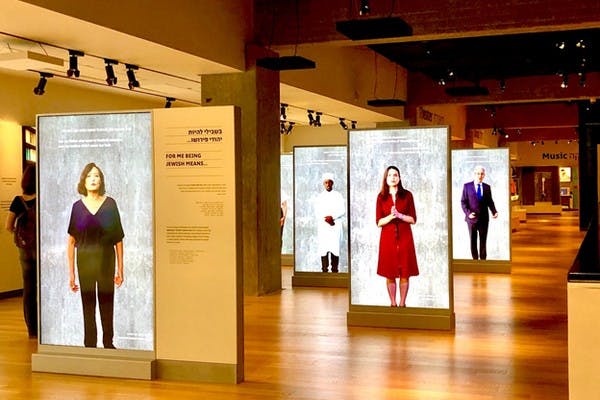
In an interview for the opening in March 2021, museum director Dan Tadmor told Haaretz: “when you’re launching a totally new museum, it should have a new name. The word tfutsot [diaspora] expresses an outlook that draws a line between different types of Jews – those in Israel and those in the Diaspora – and derives from the discourse that prevailed in the ’50s and ’60s. The terminology is outdated and no longer fits the reality.”
Tadmor added: “When the museum opened in 1978 it was groundbreaking and marvellous, and I take my hat off to the generation of its founders – Shaike Weinberg, [Abba] Kovner and others – but over the years it grew obsolete, both physically and thematically. What was marvellous in 1978 was still OK in 1988, but a decade later it was already tired. People got a dark and old-fashioned museum experience.
“We decided on the name ANU (meaning “us” in Hebrew) after considering about 100 different names. We feel that the name is inclusive and unifying, and aptly reflects the museum’s values.”
In a graphic comparing the size of diaspora Jewish communities in 1970 and today, Australia and NZ are two of the few countries where the population has grown.
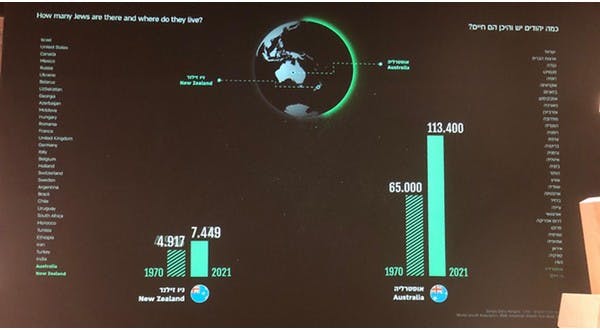
There’s also a sign from Australia’s JIFF in an exhibit about Jewish film festivals, a panel about the Jewish Community Council of Victoria and Australia’s first Jewish Governor General, Sir Isaac Alfred Issacs.
In what often feels like quite an American-centric museum, I would have loved to see John Safran and Jordana Borensztajn mentioned in the section on Jewish comedians, or Deborah Conway, Lior and Ben Lee mentioned in the section on successful Jewish musicians. But I guess you can’t have it all.
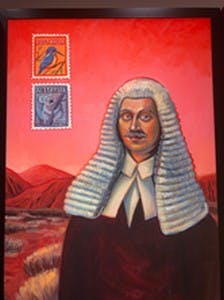
While the new museum does still touch on Judeophobia that Jews experienced under both Christian and Muslim rule, including a modest Holocaust exhibit, there is no reference to discrimination Jews experience in Israel, such as Women of the Wall who have been consistently harassed for expressing their Jewish beliefs at the Kotel for over 30 years, or Haredim who face much hatred from secular Israelis for choosing to study Torah as a full-time occupation. It’s as if antisemitism is only a phenomenon that happens in the diaspora.
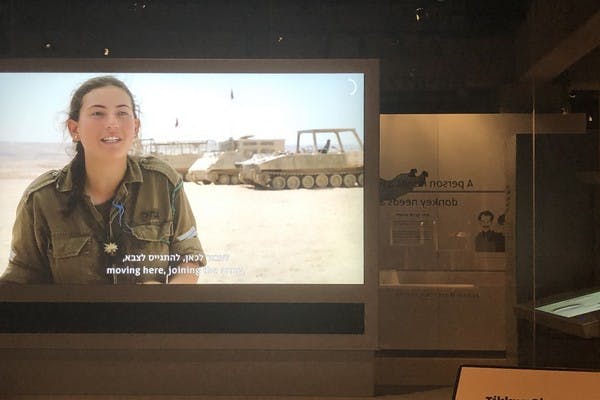
There is also no reference to one of the most talked about topics that consume much of the Jewish world today, namely the Israeli-Palestinian conflict. The only part of the museum where they get close to this hot potato issue is in the video about repairing the world, where a bright-eyed young female IDF soldier speaks about how making aliyah and serving in the military is an expression of tikkun olam (repairing the world) for her, followed by a young Jewish man who teaches at an underprivileged school in Chicago and equally views this as a similar act.
My two favourite items in the museum were a Torah cover that appeared in the form of a pregnant woman by Jacquiline Nichols titled, Maternal Torah: The Yeshiva In-Between and a golden kiddush cup modeled into the shape of a Starbucks takeaway coffee cup in a section called “Then and Now - Tradition Vs Modernity.”
These are but two of many examples where the museum brings creative art pieces to challenge and broaden the ideas of its visitors about what it means to be Jewish, and how Jews today express their connection to their heritage.
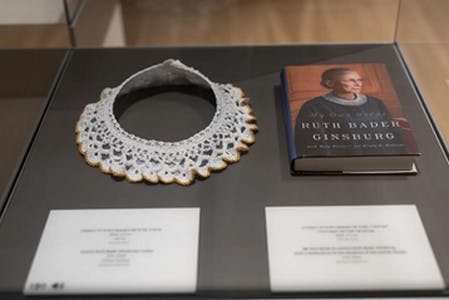
It was also a thrill to see the original Hebrew typewriter Isaac Bashevis Singer used to write his stories during visits to Israel, and the trademark white lace collars worn by the late US judge Ruth Bader Ginsburg, together with a signed copy of her autobiography, My Own Words, under bright lights in beautiful exhibits.
For the youngsters, there’s a highly engaging room on the ground floor the size of a football field called Heroes: Trailblazers of the Jewish People, a multimedia exhibit geared to children showcasing 143 Jewish heroes and heroines. An assortment of interactive displays enables visitors to design a protest poster in the spirit of antiwar Marxist activist Rosa Luxemburg; catch a ribosome as they learn about Israeli Nobel Prize-winning scientist Ada Yonath; or jot down philosophical questions, inspired by a recording of an actor playing the great Hebrew philosopher Maimonides.
There’s even an interactive screen where a child can choose their favourite slogan for a protest and then have a photo of themselves emailed showing how they would appear holding this sign at an Israeli demonstration.
One of the more interesting things I learned from the section of the museum called Jewish Humour - Everyone’s Humour, was that in 1975, 75 percent of all Americans who were engaged in comedy as a profession were Jews. According to the 2013 Pew survey, many Jewish Americans consider humour to be the most important element of their Judaism - often even more important than being active in the Jewish community, keeping Shabbat or observing festival rituals.
If there’s one “must take” photo in the museum for fans of Jewish comedy, it is the opportunity to sit on the famous green couch from the set of the television show Seinfeld. One of American’s most well-known Jewish comedians appears so often in the museum, that in an episode on the Promised Podcast about ANU, Israeli lecturer and podcast host Noah Efron joked: “I’d say about 18% of this museum is dedicated to Jerry Seinfeld… it’s basically the ‘Seinfeld and other Jews Museum’.”
For those who love pointing out which athletes, celebrities or actors are Jewish whenever they watch TV, this museum is a dream come true.
In the same podcast, Haaretz journalist Allison Kaplan Sommer noted that in a time when God, Religion and Zionism are less compelling reasons than ever before for secular cultural Jews in the US to engage with their tradition, this museum provides a compelling answer to the question of “Why be Jewish?” that is not “to defeat Hitler” or “to defend Israel”.
Rather than the Zionist story having its own room, in this museum, an image from the 1967 Israeli film He Walked Through The Fields appears side by side with an image from ET, showing that both are creations of Jewish filmmakers in a completely non-hierarchical manner. The message is that Israel is no longer the pinnacle of Jewish expression and the answer to the suffering of the Diaspora, as was the narrative of the old museum. It is now one of many places where Jews live.
Rabbis also feature quite sparingly. In fact, there are far more images and stories about Woody Allen and Natalie Portman than Hillel or Shammai.
ANU wants the visitor to celebrate the unlikely reality that one of the smallest religions on earth by number has produced some of the greatest authors, actors, filmmakers, dancers and playwrights that ever lived.
Without writing it on the wall, the final question it wants you to ask yourself (perhaps together with your Jewish mother) is, “How could you not feel proud to belong to such incredible people?”
For Israelis, the majority of whom have an Orthodox synagogue they don't go to, this museum may be seen as challenging, as it so emphatically embraces a former slogan of the Israeli Reform movement, “there is more than one way to be Jewish”.
For diaspora Jews, I feel it will be a much-loved destination when flights resume to Israel. At the moment, tour groups with limited time in Israel prioritise Masada, Yad Vashem and the Kotel. The first two remind Jews the price of not having a state, with the final reminding visitors of the blessings of religious expression that come with Jewish sovereignty. Adding ANU as a fourth must see venue for future trips will inculcate another important message.
Israel is one of many Jewish communities that stands beside all other Jewish communities of the world in facilitating Jewish flourishing and diversity, embracing the principle that to be Jewish is to be part of the “choosing people” rather than the “chosen people.” It will remind every visitor that Judaism is not a singular answer, but rather a path with many destinations. For that, we can be grateful.
Photo: Ittay Flescher sits in the Seinfeld exhibit
